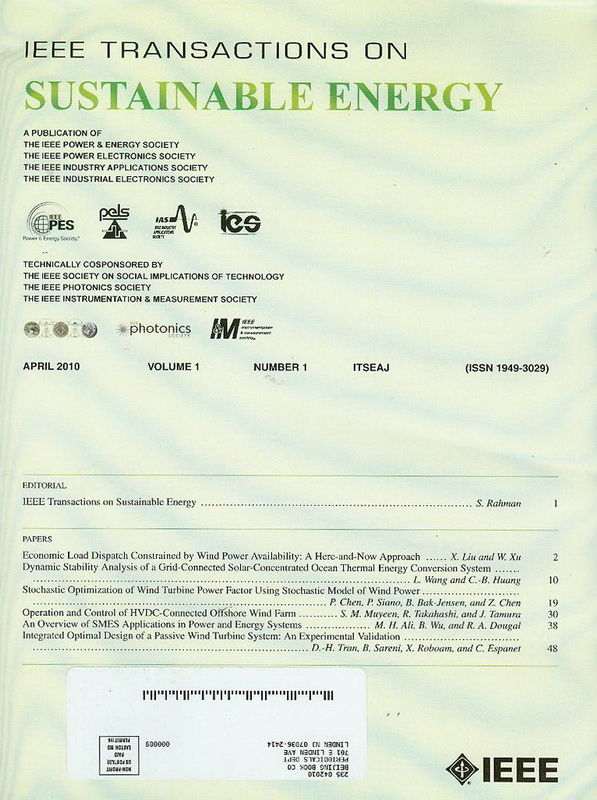Cooperative Strategies for Frequency Control of Wind Turbines to Mitigate Secondary Frequency Dip: Coefficient Allocation and Exit Techniques
IF 8.6
1区 工程技术
Q1 ENERGY & FUELS
引用次数: 0
Abstract
With the increasing integration of wind power into the power system, the incorporation of wind turbines into the grid's primary frequency regulation through inertia and droop control has been proven effective. However, a phenomenon known as secondary frequency dip (SFD) occurs when wind generators exit frequency regulation to restore the turbines’ speeds. This paper introduces a cooperative approach to mitigate SFD. Initially, a system frequency response model is established, incorporating the combined effects of synchronous generators and wind turbines. Subsequently, a model to forecast the rotational speed of each wind turbine in response to load changes is developed. Based on these models, the droop and inertia coefficients of different turbines in a wind farm are optimized to minimize overall wind energy loss during frequency regulation, thereby alleviating SFD, while ensuring the rotational speed remains within a safe range. Additionally, a smooth transition strategy based on a low-pass filter is proposed to prevent an abrupt decrease in active power as turbines exit frequency regulation. Finally, to prevent a simultaneous drop in active power among a large number of wind turbines, a sequential exit strategy from frequency regulation is proposed. Simulation results validate the effectiveness of the proposed methods in mitigating SFD.求助全文
约1分钟内获得全文
求助全文
来源期刊

IEEE Transactions on Sustainable Energy
ENERGY & FUELS-ENGINEERING, ELECTRICAL & ELECTRONIC
CiteScore
21.40
自引率
5.70%
发文量
215
审稿时长
5 months
期刊介绍:
The IEEE Transactions on Sustainable Energy serves as a pivotal platform for sharing groundbreaking research findings on sustainable energy systems, with a focus on their seamless integration into power transmission and/or distribution grids. The journal showcases original research spanning the design, implementation, grid-integration, and control of sustainable energy technologies and systems. Additionally, the Transactions warmly welcomes manuscripts addressing the design, implementation, and evaluation of power systems influenced by sustainable energy systems and devices.
 求助内容:
求助内容: 应助结果提醒方式:
应助结果提醒方式:


